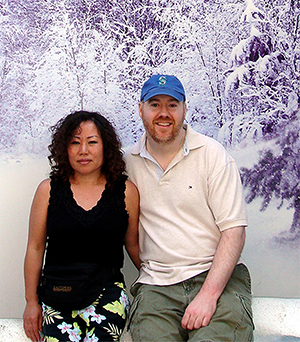
 Photography Tips for Everyday Moments
Photography Tips for Everyday Moments
The most extraordinary beauty is often found in ordinary moments. In this series, William Stanek helps you see the world through a new lens, transforming everyday experiences into stunning photographic memories.
- (May 23, 2025) Photographing Food: Turning Meals into Masterpieces
- Introduction: The Art of Making Food Look Irresistible
- Lighting and Angles: The Best Ways to Showcase the Texture and Color of Food
- Styling Tips: Simple Tricks to Make Your Food Look More Appealing
- Background and Props: Choosing the Right Setting to Complement Your Dish
- Making Your Meals Look Delicious: The Art of Food Photography
- Conclusion: Turning Meals into Visual Masterpieces

Transform your life with practical wisdom. Discover William Stanek's 'Living Well' series—your guide to a balanced and fulfilling life.
Discover William Stanek's Exclusive Art Collection
Explore and purchase the stunning art featured on this site. Own a piece of William Stanek's unique and captivating artwork today!
(May 23, 2025) Photographing Food: Turning Meals into Masterpieces
Food photography is more than just capturing what’s on your plate—it’s about conveying the deliciousness, texture, and artistry of a dish in a way that makes viewers' mouths water. Whether you’re photographing a home-cooked meal, a restaurant dish, or an extravagant dessert, the goal is to make the food look as good as it tastes. Here, we’ll explore the art of food photography, offering tips on lighting, angles, styling, and choosing the perfect background and props to make your meals look like culinary masterpieces.
Introduction: The Art of Making Food Look Irresistible
We eat with our eyes first, and in the world of social media, food photography has become an essential skill for food bloggers, chefs, and home cooks alike. A well-captured photo can elevate a simple meal to a work of art, conveying the taste, texture, and aroma of the dish through the image alone. But great food photography isn’t just about pointing your camera at your plate; it requires a thoughtful approach to lighting, composition, and styling.
Whether you’re snapping a quick shot of your breakfast for Instagram or documenting a complex recipe for a food blog, understanding the techniques of food photography will help you create images that are not only visually appealing but also mouthwateringly delicious. In this article, we’ll guide you through the essentials of food photography, from choosing the right lighting and angles to styling your dish and selecting the perfect background.
Lighting and Angles: The Best Ways to Showcase the Texture and Color of Food
Lighting is one of the most critical elements in food photography. The way you light your dish can make the difference between a flat, unappetizing image and a vibrant, delicious-looking photo. Along with lighting, the angle from which you shoot can dramatically affect how the food is perceived.
Natural Light is Best: Natural light is your best friend in food photography. It provides a soft, even illumination that enhances the colors and textures of the food without the harsh shadows that can result from direct flash. Position your dish near a window to take advantage of natural light, and avoid shooting under overhead lights, which can cast unflattering shadows. If the light is too harsh, diffuse it with a white curtain, a piece of parchment paper, or a photography diffuser to create a softer effect.
Side and Back Lighting: Side lighting, where the light source is positioned to the side of the dish, is ideal for highlighting textures and creating depth. This type of lighting emphasizes the dimensionality of the food, making it look more three-dimensional and appealing. Backlighting, where the light comes from behind the dish, can create a beautiful glow and highlight the translucency of certain ingredients, like thin slices of fruit or delicate herbs. Backlighting works especially well for drinks, soups, and dishes with a glossy or shiny surface.
Avoid Direct Overhead Light: While overhead shots are popular in food photography, direct overhead lighting can flatten the food and reduce the appearance of texture. If you’re shooting from above, position the light source at an angle to create subtle shadows that add depth and interest to the dish.
Experiment with Angles: The angle from which you photograph your food can dramatically change the composition and impact of the image. For flat dishes like pizzas or tarts, a top-down shot (90 degrees) often works best, capturing all the details in a single frame. For layered dishes, like burgers or cakes, a side-on shot (0 degrees) showcases the layers and height, making the food look more substantial and inviting. A three-quarter angle (around 45 degrees) is a versatile choice that works well for most dishes, providing a sense of depth while still showing off the overall presentation.
Pro Tip: When using natural light, shoot during the golden hours—early morning or late afternoon—when the light is soft and warm. This light enhances the natural colors of the food and creates a more inviting atmosphere.
Exercise: Practice photographing a simple dish using different lighting setups and angles. Try side lighting, backlighting, and a top-down shot to see how each technique affects the appearance of the food. Experiment with different angles to find the most flattering perspective for your dish, and reflect on how these choices influence the overall appeal of the image.

Styling Tips: Simple Tricks to Make Your Food Look More Appealing
Styling is an essential part of food photography—it’s what turns a good dish into a visually stunning masterpiece. Thoughtful styling can highlight the best features of the food, create a sense of balance, and make the dish look irresistible.
Keep it Simple: When it comes to food styling, less is often more. Too many elements on the plate can clutter the image and distract from the main dish. Focus on simplicity and let the food be the star of the show. For example, if you’re photographing a salad, a few carefully placed leaves, a sprinkle of seeds, and a drizzle of dressing can make the dish look fresh and appetizing without overwhelming the viewer.
Use Fresh Ingredients: Freshness is key to making food look appealing. Wilted lettuce, overcooked vegetables, or dried-out meat won’t look appetizing in a photo. Choose the freshest ingredients you can find, and prepare them just before photographing to ensure they look their best. If you’re photographing a dish that includes fresh herbs or garnishes, add them at the last minute to keep them looking vibrant.
Add Garnishes and Accents: Garnishes and accents can add color, texture, and interest to your food photos. A sprinkle of herbs, a twist of lemon, or a drizzle of sauce can elevate the dish and make it look more dynamic. When adding garnishes, think about color contrast and placement—choose garnishes that complement the main colors of the dish and place them strategically to guide the viewer’s eye through the image.
Create Movement and Texture: Food that looks static or too perfect can feel unnatural in a photo. Create a sense of movement by showing the food in action—drizzling syrup over pancakes, sprinkling cheese on pasta, or cutting into a cake. This adds a dynamic element to the image and makes the food feel more alive and inviting. Additionally, focus on capturing textures—whether it’s the crispy skin of a roasted chicken, the gooeyness of melted cheese, or the fluffiness of a cake. Textures are what make food photos mouthwatering, so emphasize them in your styling.
Use Complementary Colors: Color plays a big role in food photography, and choosing the right color palette can make your dish pop. Use complementary colors (those opposite each other on the color wheel) to create visual contrast and draw attention to the food. For example, a bright green salad on a red or orange plate will stand out, while a rich chocolate cake might look best on a deep blue or teal background. Be mindful of the colors in the food itself and choose props and backgrounds that enhance, rather than clash with, the dish.
Pro Tip: Keep a set of simple props on hand, such as small bowls, napkins, utensils, and cutting boards. These can be used to add context and style to your food photos without overpowering the main dish.
Exercise: Prepare a dish and experiment with different styling techniques. Try adding garnishes, creating movement, and emphasizing texture to make the food look more appealing. Play with complementary colors and props to see how they enhance the overall composition. Reflect on how each styling choice contributes to the visual appeal of the final image.
Background and Props: Choosing the Right Setting to Complement Your Dish
The background and props you choose for your food photography are just as important as the food itself. They set the scene, complement the dish, and help tell the story behind the meal. A well-chosen background can make the colors of your food pop, while the right props can add depth and context to the image.
Neutral Backgrounds: A neutral background, such as a wooden table, marble countertop, or plain linen cloth, provides a clean, unobtrusive backdrop that lets the food take center stage. Neutral tones—like white, beige, gray, or brown—work well with most dishes, enhancing the colors of the food without competing for attention. A simple background also allows you to focus on composition and styling, making the food the hero of the shot.
Textured Surfaces: Textured surfaces, like rustic wood, slate, or concrete, add visual interest and depth to your food photos. These surfaces can complement the textures in the food itself, creating a harmonious composition. For example, a rustic wood background pairs beautifully with hearty, rustic dishes like stews or roasts, while a smooth marble surface complements elegant, refined dishes like pastries or seafood.
Props for Context: Props are an excellent way to add context and tell a story in your food photography. Consider using utensils, napkins, glassware, or small serving dishes to create a scene around the food. For instance, a steaming cup of coffee and a folded napkin beside a plate of pancakes can evoke the feeling of a cozy breakfast, while a wine glass and candle can set the mood for a romantic dinner. When choosing props, think about the story you want to tell and select items that enhance, rather than distract from, the main dish.
Color Coordination: Coordinate your props and background with the colors of the food to create a cohesive, visually appealing image. If your dish is colorful and vibrant, opt for more subdued props and backgrounds that won’t compete with the food. Conversely, if the food itself is more monochromatic, you can use brighter or more colorful props to add a pop of color and interest to the scene.
Layering and Depth: Create depth in your composition by layering props and elements in the foreground and background. For example, place a cutting board with fresh ingredients in the foreground and a blurred-out bottle of olive oil in the background to add dimension to the shot. This layering technique helps guide the viewer’s eye through the image and makes the scene feel more dynamic and three-dimensional.
Pro Tip: Avoid using too many props or overly elaborate backgrounds that could overshadow the food. The focus should always remain on the dish, with the background and props serving to complement and enhance the main subject.
Exercise: Set up a food photo shoot using different backgrounds and props. Start with a neutral background, then experiment with textured surfaces and various props to create different moods and stories. Pay attention to color coordination and layering to see how these elements affect the overall composition. Reflect on how the background and props contribute to the narrative and visual appeal of the image.
Making Your Meals Look Delicious: The Art of Food Photography
Food photography is a blend of art and technique, where every detail matters—from the lighting and angles to the styling, background, and props. By mastering these elements, you can transform any meal into a visually stunning masterpiece that not only looks delicious but also tells a story.
Telling a Story Through Food: Every dish has a story behind it, whether it’s a cherished family recipe, a new culinary creation, or a beautifully plated dish from a restaurant. Use your food photography to tell that story, highlighting the colors, textures, and ingredients that make the meal special. Think about the emotions and memories the dish evokes and how you can convey that through your photos.
Pro Tip: Practice makes perfect in food photography, so don’t be afraid to experiment with different techniques, styles, and compositions. The more you practice, the better you’ll become at capturing the essence of the dish and making your food look irresistible.
Exercise: Choose a meal you love and photograph it with the goal of telling its story. Use the tips and techniques you’ve learned—lighting, angles, styling, background, and props—to create an image that captures the dish’s flavors, textures, and emotions. Reflect on how your choices in composition and styling help convey the story behind the meal.

Conclusion: Turning Meals into Visual Masterpieces
Food photography is a rewarding and creative way to share your love of food with others. By focusing on the details—whether it’s the play of light on a glossy sauce, the vibrant colors of fresh ingredients, or the textures that make a dish come alive—you can create images that are not only visually appealing but also mouthwateringly delicious.
As you continue to explore the art of food photography, remember that every meal offers an opportunity to experiment, to tell a story, and to capture the beauty of food in its many forms. Whether you’re photographing a simple home-cooked dish or an elaborate restaurant meal, use the techniques you’ve learned to turn your food into visual masterpieces that will leave your viewers hungry for more.
Share your food photography with us on Instagram using #FoodAsArt. We’re excited to see how you’re turning your meals into culinary works of art through your lens.

Join William at the crossroads of technology, business, and leadership, where true influence isn't about titles - it's about inspiring action, driving change, and guiding others with integrity. Discover how authentic leadership can transform not just careers, but entire industries.
Bring Inspiration Home
Enhance your space with William Stanek's evocative art. Each piece is crafted to inspire and uplift your everyday life.

Support The Lights of Paris by Robert Stanek, William Stanek's pen name! Through vivid historical detail and deeply moving character stories, Robert takes readers on an unforgettable journey through one of history’s most transformative times.
















